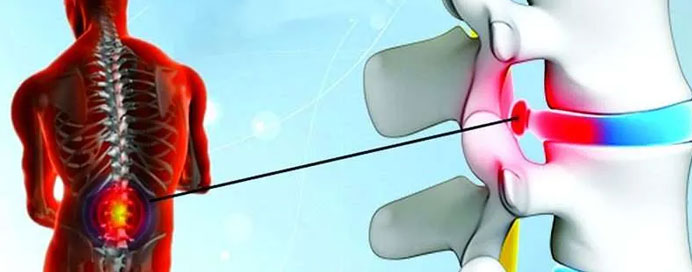Services / Dr. Ravi Bhanushali

A slipped disc, also known as a herniated disc or a ruptured disc, is a common condition that occurs when one of the discs that act as cushions between the vertebrae in the spine ruptures or bulges out of its normal position. This can lead to compression or irritation of nearby nerves, resulting in pain, numbness, or weakness in the affected area.
Here’s an overview of slipped discs:
Anatomy of the Spine: The spine is made up of a series of bones called vertebrae, which are separated by intervertebral discs. These discs consist of a tough outer layer called the annulus fibrosus and a gel-like inner core called the nucleus pulposus. The discs act as shock absorbers and provide flexibility to the spine.
Causes: Slipped discs can occur due to various factors, including:
Symptoms: The symptoms of a slipped disc can vary depending on the location and severity of the herniation, as well as the extent of nerve compression. Common symptoms include:
Diagnosis: Diagnosis of a slipped disc typically involves a thorough medical history and physical examination, along with imaging studies such as X-rays, MRI (Magnetic Resonance Imaging), or CT (Computed Tomography) scans to confirm the presence and location of the herniated disc and assess any nerve compression.
Recovery and Rehabilitation: Recovery from a slipped disc varies depending on the severity of the herniation and the chosen treatment approach. Physical therapy exercises can help improve strength, flexibility, and posture, while also reducing the risk of future disc herniation.
